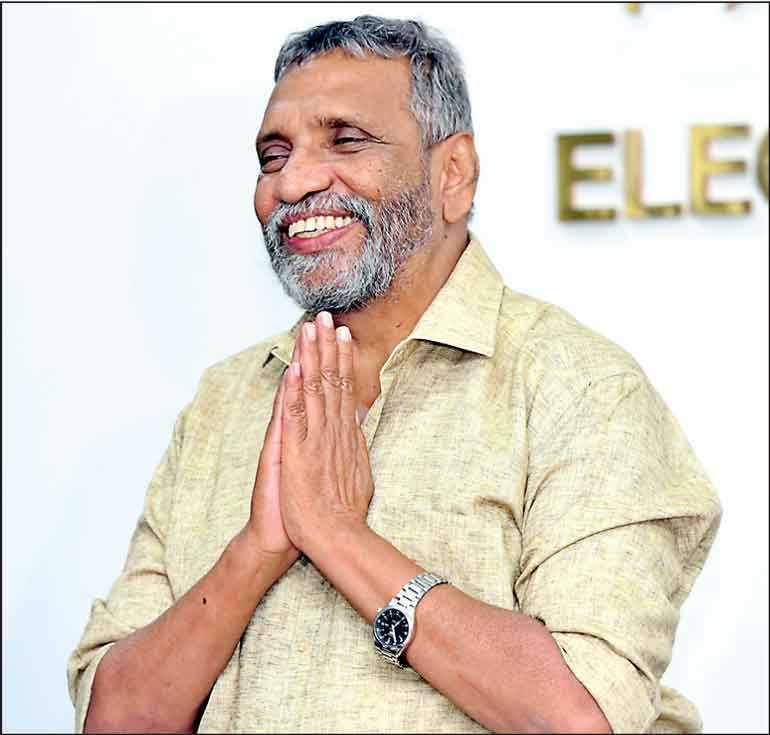Friday Nov 15, 2024
Friday Nov 15, 2024
Thursday, 6 August 2020 00:00 - - {{hitsCtrl.values.hits}}

Sri Lanka Podujana Peramuna (SLPP) Leader Mahinda Rajapaksa, United National Party (UNP) Leader Ranil Wickremesinghe, and Samagi Jana Balawegaya (SJB) Leader Sajith Premadasa casting their votes yesterday

Election Commission Chairman Mahinda Deshapriya takes leave after concluding his last election yesterday – Pic by Ruwan Walpola
By Chandani Kirinde
Sri Lankans braved COVID-19 health risks to exercise their franchise at yesterday’s Parliamentary Elections with around 71% of the 16.2 million registered voters casting their vote.
The highest polling was in the Hambantota district, where around 76% of voters cast their vote while the lowest was in the Puttalam district, which had around 63% of the votes cast, Election Commission Chairman Mahinda Deshapriya said
The turnout however was down from the nearly 84% that voted in last November’s Presidential Election. It is also lower than the turnout at the last Parliamentary Election held in 2015, where nearly 78% of registered voters cast their vote.
Ballot boxes were transported to 2,820 counting centres across the island under tight security and counting of votes will commence at 7 a.m.
“This is the first-time votes are not being counted right after the close of polls. The decision to count the votes the next day was taken on account of the COVID-19 situation,” he said.
Deshapriya assured the ballot boxes were secure and polling agents from different political parties and representatives of independent candidates are allowed into the counting centres to monitor the situation while strict security measures, too, are in place.
People...
He said the EC expects to announce the first results around 2:30 p.m. today and the final result around midnight. “We hope to release the preferential vote count by Friday night or Saturday morning the latest,” Deshapriya said, adding that the Gazette notification with the names of the winning candidates as well as those appointed from the National List should be out by Monday (10 August).
Polling to elect members to the ninth Parliament of Sri Lanka began at 7 a.m. yesterday with strict health guidelines in place to minimise the risk of the spread of the COVID-19 on Election Day and closed at 5 p.m., an extra hour later than on usual voting days, allowing people more time to vote while complying with health rules, such as maintaining social distancing and sanitising hands at polling booths.
The EC Chairman said that the measures had ensured there was zero risk of anyone contracting COVID-19 during the electoral process.
“We followed all the guidelines given to us by the health authorities. We are confident that voters and those on election duty were at zero risk of exposure to COVID-19,” he said.
Deshapriya said polling day was devoid of any election-related violence and said what they had were reports of “violations, not violence”. A total of 288 complaints had been received by the complaints division of the EC yesterday, of which the majority were related to putting up posters/banners and obstruction of voters.
He said none of the complaints were serious enough to warrant the annulling of the vote at any of the polling centres.
A total of 7,452 candidates are vying for a seat in the 225-Member Parliament, with 3,652 contesting from political parties and another 3,800 from independent groups. In 2015, a total of 6,151 candidates contested.
One hundred and ninety-six Members of Parliament (MPs) will be directly elected from the 25 districts to the Legislature while 29 will be appointed from the National List.
